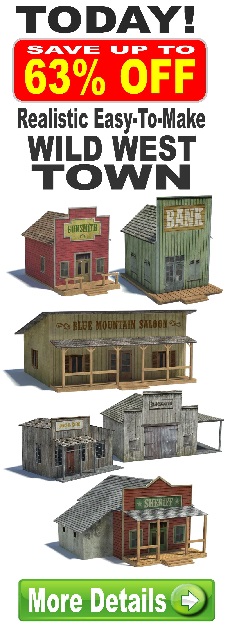Everything on model trains, model railroads, model railways, locomotives, model train layouts, scenery, wiring, DCC and more. Enjoy the world's best hobby... model railroading!
Reverse Loop Issue – Shorts Out
Doug from Northern Australia asks readers:
“Hi, I run HO DCC (NCE 5 amp) and am trying to wire up an MRC auto reverse module. I have a simple loop running back onto a main line, through a set of left hand points (switch) and each time I set the points to the left it shorts out. I have isolated all ends of points, but still the same. I am using insulfrog points. If I run the loco around the leave the points straight ahead the diesel has enough weight to run through the points (downwards) without derailing (carriages would not do so).”
3 Responses to Reverse Loop Issue – Shorts Out
Leave a Reply
















Hi Doug, Your reverse loop many people have problems with wiring it up. I have 2 reverse loops planned for my layout, The first one will be starting very soon. Your switch should be powered from the track coming into the points end of the switch Your power should come from the buss wires under that for the loop circuit rail power in.. After the switch, I usually give a short section of track powered through the switch on both outbound directions if you have room where at that point you need to double insulate both directions (all 4 rails). Take your power from your inbound track and that will power your reverse circuit board. (your circuit board may also have a power transformer to work the circuit board.
Your outboard track wires from the circuit board should follow your same rails on the loop as your normal entry into the loop. When your train enters the insulated loop it should match your regular rail power. As your train finishes the loop and starts to cross the departure insulators it should auto reverse the circuit to match the outbound track without stalling your train. Your train if going the other way through the loop should switch the circuit as it crosses the reversed polarity and will do the same on the final insulators to the outbound track.
Depending on your type of switches some have to have the outbound two tracks insulated on the two rails that come together with the frog. the frog and those 2 frog rails if not powered by the switch rail position will need a power wire from the inbound left or right rail depending on witch direction the switch is thrown. If you are using a tortuous switch motor (it has a circuit that will feed the frog from the proper rail) If you are using a standard switch your rail power should continue through to your switch as normal till it gets to the double insulators The key is the double insulator connectors on both directions. Actually now that I think about it if you are using a directional powered frog. put a set of insulators at the end of your frog rails how ever long from the switch you wish on the frog rails. After you pass those insulators bridge your main feed wires to a short section after the switch to continue your normal power after the switch as if you were just continuing on normally. Then the double insulators and then power the loop as I said above. The reason is when the frog directional power if thrown the other way will have the wrong polarity on the frog rails. But at the beginning of the loop section insulate both on both rails with the insulated connectors. But even if you have your reverse loop wired right, your directional powered frog when the switch is still thrown the other way if your engine crosses that insulator it will short till the switch is thrown in the right direction.
I am sure I got this as clear as mud Just insulate all rails outbound entering the loop and insulate for the directional powered frog rails. Don’t do both operations at the same insulators and don’t cross the frog rail insulators till the switch is thrown correctly. from Newman
Thanks for the feedback and great information it is appreciated – I got it worked out as you have suggested
Hi Doug, Let me know the outcome. I had to re-read what I wrote to make sure I said what I meant. Hope I helped you. Good Luck Newman